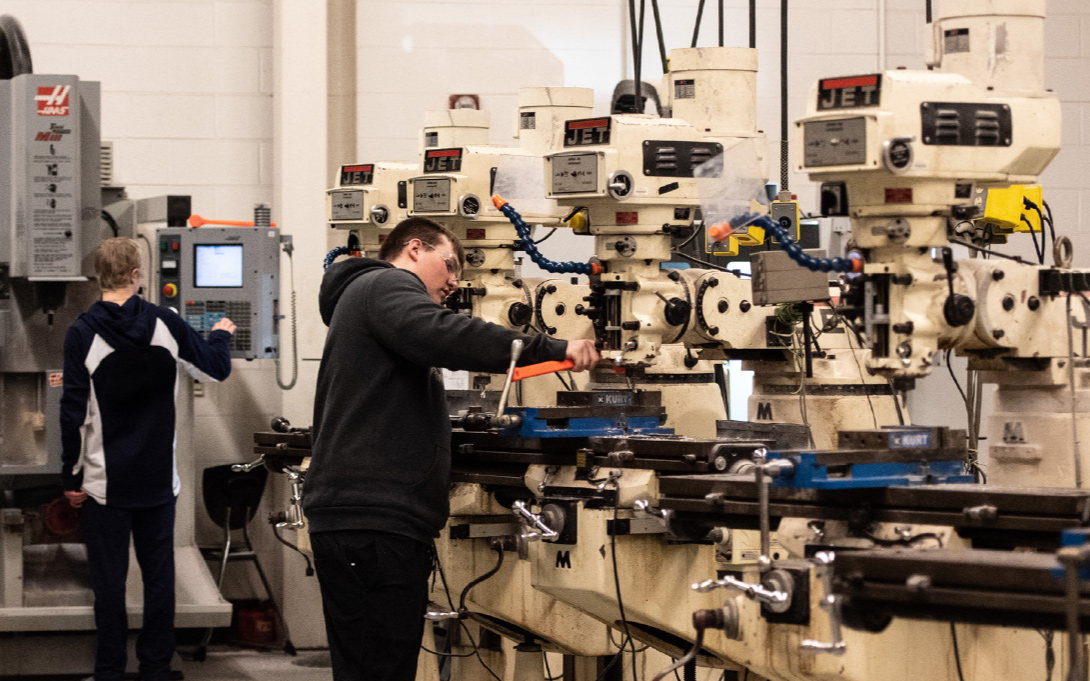
A new University of Michigan report detailing access to career and technical education programs in Michigan has found that while CTE courses are popular among high school students, there’s a gap in access to them.
CTE courses prepare students to work in specific careers. Some enter the labor market right out of high school, while others enroll in college.
Michigan’s CTE includes 17 career clusters, or sets of related programs of study, ranging from finance, health science and information technology to manufacturing, marketing, and science, technology, engineering and mathematics. But there hasn’t been a systematic review of high school access to these different programs, nor has there been a study of the effectiveness of CTE programs.
The U-M report, produced by the Youth Policy Lab, found that the program is popular, with half of all Michigan high schoolers having taken CTE courses. But the report also found unequal access to the courses across Michigan.
“Students of color and economically disadvantaged students are less likely to participate in CTE statewide, but this disparity disappears when you compare more and less advantaged kids within the same high school,” said Brian Jacob, lead author of the report and co-director of the Youth Policy Lab, a partnership of the Gerald R. Ford School of Public Policy and the Survey Research Center at the Institute for Social Research.
“This suggests that differences in access — rather than differences in student interest — are probably driving gaps in participation.”
The report examined nine cohorts of students, identified by the year they were expected to graduate. It found that business, marketing and health sciences were the most popular programs in CTE.
It also found that male students were roughly 20 percent more likely to participate in CTE than female students; that more white students, at 54 percent, participated than black (41 percent) and Hispanic (44 percent) students. Economically disadvantaged students, defined by those who qualified for free or reduced-price lunch, participated at a lower level than the statewide average.
Students who attend urban schools are significantly less likely to participate compared to students in suburban, town and rural schools. Students in charter schools are 36 percent less likely to participate than those in traditional public schools.
But these numbers may reflect a difference in access to these programs rather than student interest and other demographic factors, Jacob said.
Some programs, such as business and marketing, are easier for school districts to implement because they require fewer resources than a welding program might, for example. Schools may also find it difficult to find qualified CTE teachers, who must not only have a teaching certificate, but also 4,000 “market hours” of experience in the field they are teaching.
“The availability of these programs are limited — kids that attend wealthier districts have different access than kids who attend less wealthy districts,” Jacob said.
The report also examines completion rates in the state’s 16 federally recognized programs (Michigan added another program in energy). The health science program had the highest completion rate among participants, at nearly 65 percent, and the government program had the lowest completion rate, at about 22 percent.
“Failing to complete a program is not necessarily an undesirable outcome,” according to the report. “By trying a program, students may learn about their level of interest and comparable advantages in a given profession.”
Additionally, CTE’s effects on employment outcomes have not yet been studied. The report links the average earnings of specific fields to CTE programs, but has not yet tracked students who complete CTE programs with whether they work in their field of study, and how much they earn. Those, Jacob said, are future steps for the Youth Policy Lab.
The full report can be found on the Youth Policy Lab website here.
This article was originally posted to University Record and was written by Morgan Sherburne.
This report has also been written about in Bridge Magazine. Their article can be found here.
